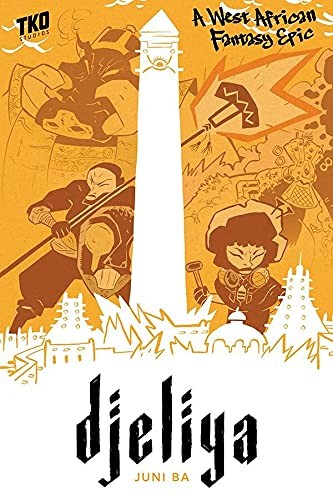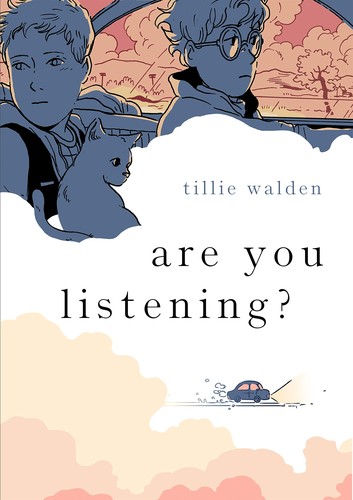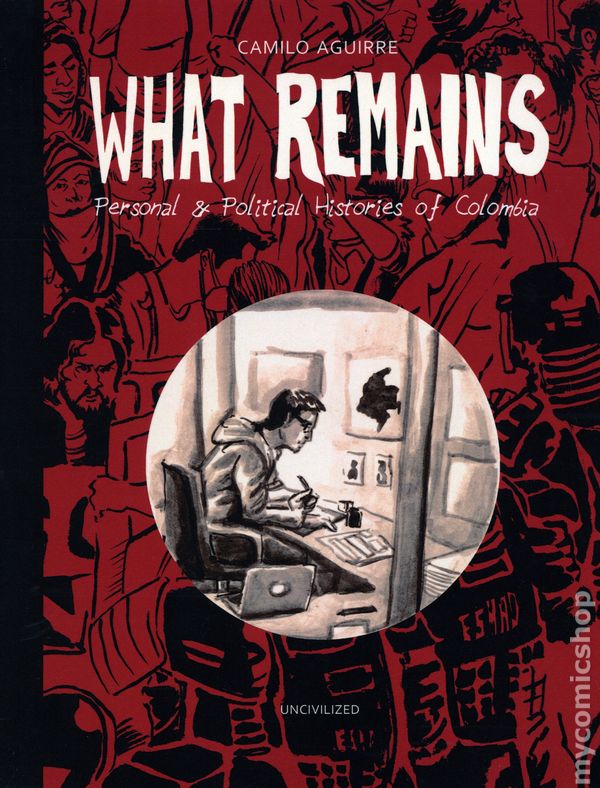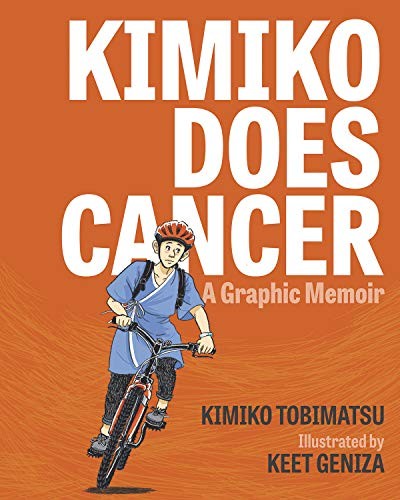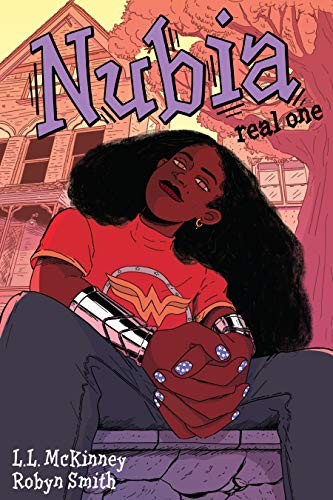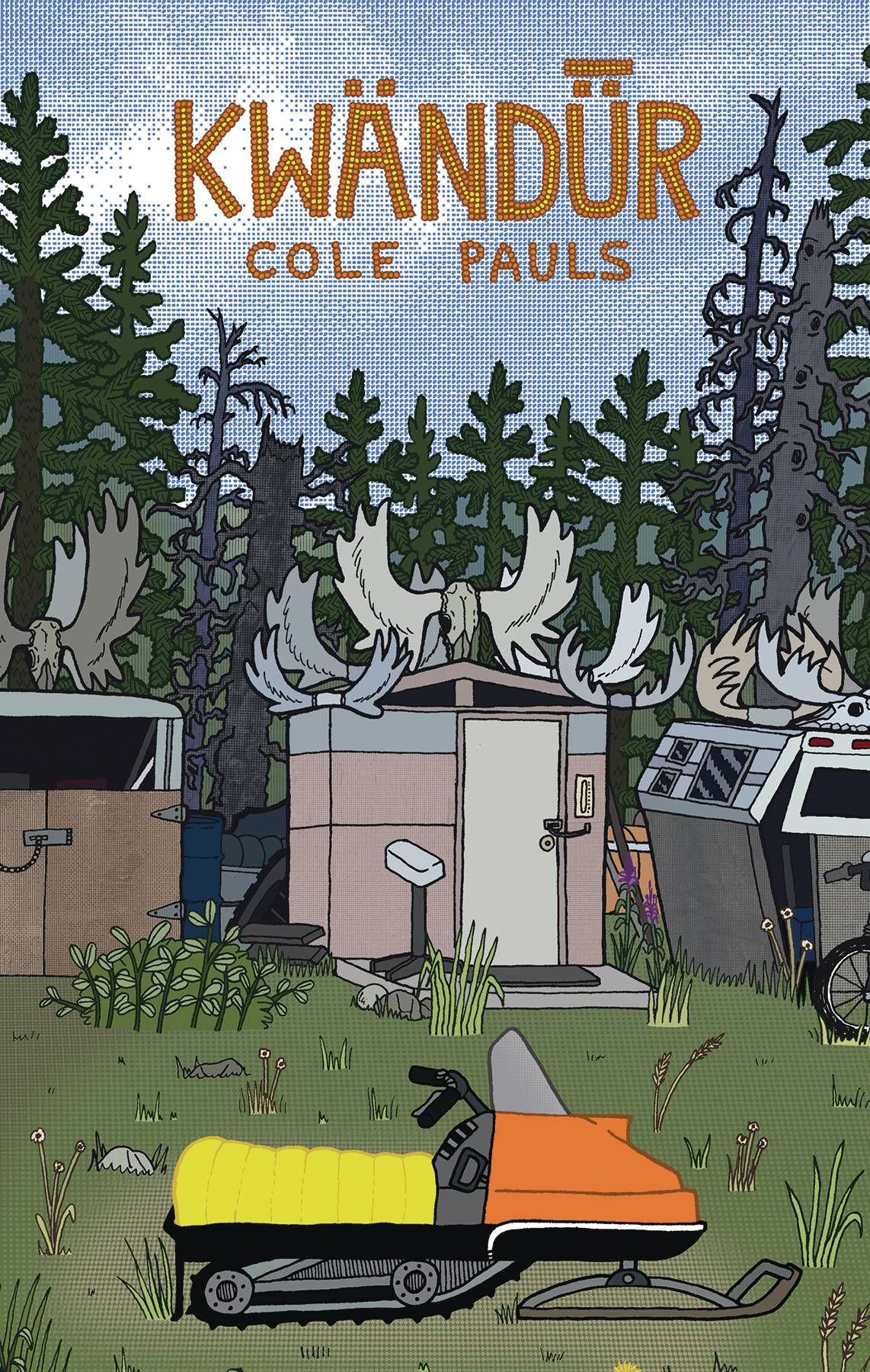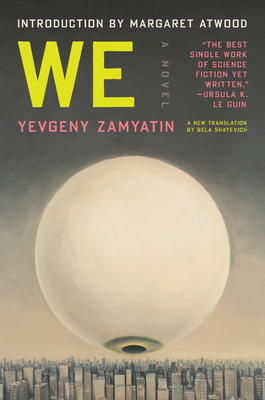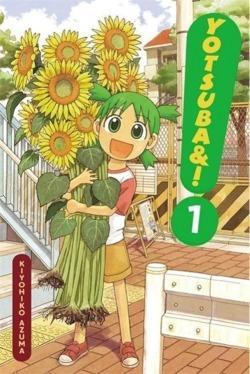Disappointing
Reviews and Comments
An avid audiobook and comics reader with few IRL outlets for what has become a very special interest.
This link opens in a pop-up window
Literally Graphic reviewed Birds of Prey by Duane Swierczynski (Birds of Prey (2011), #1)
Literally Graphic reviewed Ping Pong by Taiyō Matsumoto (Ping Pong, #1)
Ping Pong Round 2
2024 Review for volume 1 and 2: content notes for smoking, the angst of a child prodigy, and intense school sports.
Keywords that came to mind were speed, sweat, intensity, competition and line.
Written and illustrated by Taiyo Matsumoto it has apparently been three years since I told y'all that this dude is one favourite mangaka of all time.
Writing wise, I will admit to initially being a bit surprised that Matsumoto had written a sports manga as it didn't seem to be totally in his wheelhouse based off of the rest of his work I had read up until that point. On the one hand, there's definitely very Matsumoto ways in which he approaches this sports manga, and on the other hand apparently his editor kind of forced the idea onto him. Reading the essay in the back by said editor Yasuki Hori was kind of weird. Dude could …
2024 Review for volume 1 and 2: content notes for smoking, the angst of a child prodigy, and intense school sports.
Keywords that came to mind were speed, sweat, intensity, competition and line.
Written and illustrated by Taiyo Matsumoto it has apparently been three years since I told y'all that this dude is one favourite mangaka of all time.
Writing wise, I will admit to initially being a bit surprised that Matsumoto had written a sports manga as it didn't seem to be totally in his wheelhouse based off of the rest of his work I had read up until that point. On the one hand, there's definitely very Matsumoto ways in which he approaches this sports manga, and on the other hand apparently his editor kind of forced the idea onto him. Reading the essay in the back by said editor Yasuki Hori was kind of weird. Dude could apparently not decide if it was ok that Tekkonkinkreet was good but not mainstream or not. And would apparently tell Matsumoto contradictory things in every conversation.Fun!
Overall it is a very character driven story, there's some interesting meta moments, but with enough action that I still found it a bit hard to engage with on a plot level. Although the action was really well done visually.
Much more obviously Matsumoto, the art really made the book for me. The intensity of the action, the line quality, the sweat, the dramatic page layouts - when Matsumoto pulled out the stops it was all out.
Looking at the identities and representation as we always do.
Similar to most of Matsumoto's translated work, Ping Pong is dominated by men. There's a few women and girls bouncing around, but it's all about the team and the competition which are all gender segregated apparently.
Again, the focus on bettering ones self at sports and winning didn't leave much room for sexuality either. Although the anime seemed to include more heterosexual dating.
Race and nationality are a thing that come up fairly regularly in the fact that our protagonists are Japanese and one of the big contenders is Chinese. Can't really comment on the quality of the representation. I know reading about Hikaru No Go there was some drama about the international competition at the end of the series... And I've been learning a lot this past year about the history of military aggression by Japan against Korea and China etc. But I've still got a long way to go. And my light web search did not turn up any obvious answers.
Class was much more glossed over then in some of Matsumoto's other work.
In contrast disability did come up a bit more then usual. Because when it comes to ping pong these children are serious! They have workout regimens and follow nutritional guidance. Some kids get injured and others face limitations based on their physical abilities. It's not dived into but it's there at least.
Wrapping things up, while not a complete reproduction of the books, I did find the anime a lot easier to follow and engage with. It also felt like it compliments Matsuomoto's style very well. So I would highly recommend, especially if you are having a hard time reading the book like I did.
2021 Review: Originally serialized from 1996 to 1997 in Big Comic Spirits it actually came a few years after Tekkonkinkreet and right before GoGo Monster. As far as keywords go I would say sports, self discovery, and coming of age. Although, honestly, the reason I'm not continuing the series is because I was totally unable to actually connect with what was happening. I was literally reading page after page and it was going in one ear and out the other as they say. But, as someone who has proven themselves to me (and many others) over and over again, I'm sure that's more a me issue then a Matsumoto issue. The art certainly did not disappoint! Vivid, dramatic, sweaty, and still not quite like anyone else I've read. If you, unlike myself, are a bit more into traditional sports manga you might find this easier to connect to. Can't say how it depicts or doesn't depict anything though, because I really don't know what happened or who anyone was lol.
Literally Graphic reviewed Free Inside by Peter Collins
Free Inside
Content notes for nudity, guns, violence, police, torture, needles, death and lack of healthcare.
Content warning for the fact that this is not actually a comic book. But it's close enough that I felt like including it.
What kinds of keywords came to mind reading this volume? Prison, reformation, birds, nature, censorship, and life sentence.
The summary for this volume is "'Free Inside' is a portfolio [of] art and writing by the late Canadian activist and prisoner Peter Collins, who spent 32 years behind bars for killing a police officer during a botched robbery. Collins was the kind of man you'd expect to find in prison - and he still didn't belong there. Among his cartoons, paintings and articles are heartfelt words from friends, comrades and those who knew him best. 'Free Inside' is a condemnation of the Canadian prison system and an invaluable perspective on notions of justice, "rehabilitation", …
Content notes for nudity, guns, violence, police, torture, needles, death and lack of healthcare.
Content warning for the fact that this is not actually a comic book. But it's close enough that I felt like including it.
What kinds of keywords came to mind reading this volume? Prison, reformation, birds, nature, censorship, and life sentence.
The summary for this volume is "'Free Inside' is a portfolio [of] art and writing by the late Canadian activist and prisoner Peter Collins, who spent 32 years behind bars for killing a police officer during a botched robbery. Collins was the kind of man you'd expect to find in prison - and he still didn't belong there. Among his cartoons, paintings and articles are heartfelt words from friends, comrades and those who knew him best. 'Free Inside' is a condemnation of the Canadian prison system and an invaluable perspective on notions of justice, "rehabilitation", political activism, and hope. It is an imperfect record of the life and work of a courageous, compassionate man who deserved better from the world."
So digging into the craft of this volume, as I already mentioned this is not a comic book per say but a book of art, some of which is political cartoons. A very precise art form that packs a punch in potent but minimal wording or artwork. Something Collins appears to have been extremely talented at. I was also impressed by the breadth of issues covered, including but not limited to stolen land, policing protest, national politics, prison injustice, Palestinian liberation, oil extraction, sex worker solidarity and disability justice.
On the opposite end of the stylistic spectrum we had Collins' incredible Jailbird Series depicting birds juxtapositioned with the prison itself. In contrast to the overtly political cartoons, fueled by righteous indignation, these pictures of birds are tender and vulnerable. Fueled by his love of nature, and real life experience taking care of injured or orphaned birds. These paintings powerfully reflected back the hope that such creatures can bring to captive humans.
A thread that wove throughout was the pressure that Collins felt as a prisoner who was actively engaged with the political struggle against prisons. Not only did this impact his sentence in many ways, he was continuously being told to censor himself so as not to hold the powerful to account.
A different sort of beast then most of my reviews, Collins still managed to address most of the identities and intersections that I try to highlight in my reviews. Namely, class, race, disability, and more! I feel like sexuality got less coverage then most and gender was perhaps the least examined in total? There's a lot here though so that's hardly a critique.
Wrapping things up, I will read from the short bio on his online gallery "Peter Collins was a lifer at Bath Penitentiary. He lost his battle with cancer after 32 years inside the prison. He was a tireless advocate for reform, both inside and outside the prison environment, and fought injustice where ever he found it, through his artwork and writings." You can see more of his work at lockdown galleries dot com.
And five stars, because I found it really interesting, I felt like I learned a lot and took away a bit of inspiration too as far as Collins' artistic practice is concerned.
Literally Graphic reviewed Breaking free by J. Daniels
The Adventures of Tintin: Breaking Free, a classic tale of insurrection and urban uprising by J. Daniel
5 stars
And today's pick is The Adventures of Tintin: Breaking Free, a classic tale of insurrection and urban uprising by J. Daniels. A "anarchist parody of the popular Tintin comics." Originally published by Attack International in April 1988 with their urging to freely distribute.
Content notes for racism, homophobia, swastika, fist fights, brick throwing, police violence, sex, and arson.
There's a couple of different ways to read this volume for free online. So maybe look that up on duck duck go. As you can see, because I'm really bad at ever tackling digital comics, I ultimately picked up a paper copy printed by Freedom Press, which also included the much shorter piece about Tintin and the Wapping Dispute. This was originally a pamphlet from The Scum in 1986.
Keywords that came to mind reading this volume was community, intersectionality, resistance, solidarity, unions, and striking.
The summary is "Finally back in print! …
And today's pick is The Adventures of Tintin: Breaking Free, a classic tale of insurrection and urban uprising by J. Daniels. A "anarchist parody of the popular Tintin comics." Originally published by Attack International in April 1988 with their urging to freely distribute.
Content notes for racism, homophobia, swastika, fist fights, brick throwing, police violence, sex, and arson.
There's a couple of different ways to read this volume for free online. So maybe look that up on duck duck go. As you can see, because I'm really bad at ever tackling digital comics, I ultimately picked up a paper copy printed by Freedom Press, which also included the much shorter piece about Tintin and the Wapping Dispute. This was originally a pamphlet from The Scum in 1986.
Keywords that came to mind reading this volume was community, intersectionality, resistance, solidarity, unions, and striking.
The summary is "Finally back in print! He's back, and he's bad! Now Tintin's back with all his pals—Captain Haddock et al—battling it out against the State and bringing the old world to its knees, in a classic full-length graphic story of love, struggle and freedom. Give to your little niece or nephew for an adventure they can really get stuck into."
The creative team bios are very short today because J. Daniels is, unsurprisingly, a pseudonym.
Looking at the writing, I thought it was very readable, fairly action packed, and nicely paced. I particularly appreciated the way they were unafraid to show people as having flaws and learning. It does actually impress me how natural the arc of the story played out considering that our main protagonists are basically just being presented with a series of obstacles to mass organizing and learning how to overcome them one by one. First we have the divide between so called men's work and women's work; then someone wants to exclude none white workers and they get told off; then Tintin is homophobic and his squatter neighbor corrects him; we get a dash of solidarity strikes, critique of useless unions, gentrification and prisoner support. As someone who already agrees with all these points, obviously I'm less likely to find it preachy, but I think the comic doesn't come across as didactic because all these things happen fairly quickly and are framed as positive and natural changes.
The artwork was also pretty fun. Obviously this is a Tintin parody, and I think they were successful in recreating the look of those comics. Page layouts were easy to follow and the framing kept the action moving. A+.
Looking at Wikipedia, it does appear to have stirred up quite the controversy when it was originally printed. But would you expect much less, honestly.
Wrapping things up, we've already talked a bit about the different identities and points of diversity I like to highlight in each of my reviews.
I may have missed something but I feel like disability was perhaps the only identity that got missed. Which, while not totally unexpected, is a vital and very important aspect to take into consideration when discussing work related politics.
Finally, I'm going to give this five stars. It was just too much fun.
Literally Graphic finished reading Djeliya by Juni Ba
This graphic novel is not overtly rated and I did find it in the general adult section of my library. That said, both Goodreads and WorldCAT have categorized it as young adult and that certainly did not surprise me.
Flipping to the back of the book, Juni Ba describes themselves as "what happens when the influences of 2000s era Cartoon Network enter the brain of an average Senegalese boy. Since growing up in Dakar, he has come up with several works including the Monkey Meat Comics, the Kayin and Abeni miniseries with co-writer Keenan Kornegay, as well as being featured in the publications of the Nigerian house Kugali. Djeliya is his first graphic novel, but hopefully the first of many, to tackle subjects in and out of Africa."
Keywords that came to mind: Folklore, colour, adventure, cartoon network nostalgia, and storytelling.
Looking at the art, it was by far the …
This graphic novel is not overtly rated and I did find it in the general adult section of my library. That said, both Goodreads and WorldCAT have categorized it as young adult and that certainly did not surprise me.
Flipping to the back of the book, Juni Ba describes themselves as "what happens when the influences of 2000s era Cartoon Network enter the brain of an average Senegalese boy. Since growing up in Dakar, he has come up with several works including the Monkey Meat Comics, the Kayin and Abeni miniseries with co-writer Keenan Kornegay, as well as being featured in the publications of the Nigerian house Kugali. Djeliya is his first graphic novel, but hopefully the first of many, to tackle subjects in and out of Africa."
Keywords that came to mind: Folklore, colour, adventure, cartoon network nostalgia, and storytelling.
Looking at the art, it was by far the most stand out part of this particular volume. Not that anything else was seriously lacking, but more so that it was just so fun and interesting and (to be fair) nostalgic and skillful. We cycle through a couple of different dramatic colour pallets and the character designs were really unique and dynamic.
Writing wise, based off of some of the more negative reviews on goodreads I gather this is not the most easy story to follow if you aren't already used to graphic novels. This also seems like a book not necessarily directly aimed at so called north american audiences and some of my peers are not used to consuming media that isn't directly aimed at spoon feeding them. Not that that was everyone's critique; the art is not to everyone's taste for example. But I figure it's important to balance out my perspective.
Gender didn't seem to be a particular focus of the story but is fairly balanced in the seemingly most binary sense.
And I'll insert my caveat that clearly queer people have existed through all time and space, but that was also not a particular focus of the story and not seemingly a point of much diversity.
Race was also apparently a bit one note, but as this fills in a very important gap in general publishing trends I don't really care.
Class got a bit of focus based on the position of the main character I guess.
and I may be missing something but ability/disability also didn't seem to come up.
TLDR not a very character driven story as much as an action adventure dealing a lot with culture and creativity.
To conclude, I think I will join the main chorus in rating this book four out of five stars. I really enjoyed it.
Literally Graphic reviewed Are you listening? by Tillie Walden
Yes
3 stars
Cataloged in the young adult/teen section, I would describe the genre as contemporary dreamscape low key horror if that makes any sense.
Content notes for teen runaway, being hunted, and cat in danger.
Keywords that came to mind reading this comic were Texas, vehicle, sunset colour scheme, escape, highways, pit stops, breakdowns, found family, loss, and menace.
Not dissimilar to other Walden books I've read the art sucks you right in and the vibes carry you through, but by the end you are left scratching your head a little bit about what exactly happened. But in an ok way.
Unlike the two other fiction graphic novels I've read by Walden, Are You Listening had the strongest sense of place. Both literally, but also thematically. I've never been to Texas, but it did feel heavily tied to Walden's experience growing up there.
That said, it still felt like Walden pushed at …
Cataloged in the young adult/teen section, I would describe the genre as contemporary dreamscape low key horror if that makes any sense.
Content notes for teen runaway, being hunted, and cat in danger.
Keywords that came to mind reading this comic were Texas, vehicle, sunset colour scheme, escape, highways, pit stops, breakdowns, found family, loss, and menace.
Not dissimilar to other Walden books I've read the art sucks you right in and the vibes carry you through, but by the end you are left scratching your head a little bit about what exactly happened. But in an ok way.
Unlike the two other fiction graphic novels I've read by Walden, Are You Listening had the strongest sense of place. Both literally, but also thematically. I've never been to Texas, but it did feel heavily tied to Walden's experience growing up there.
That said, it still felt like Walden pushed at the walls of what we expect to happen IRL. Very dreamlike, particularly in the horror elements, but also in the way it sometimes felt like something was skipped just a little bit. Particularly in the way we transition from scene to scene. Simlar to some of my dreams, where I suddenly I find myself in different places and while dream logic says this makes sense - something in the back of my mind is like but how did I get here?
Of course this also didn't feel completely dissimilar to my first read through of the low low woods. Another great queer horror read.
Representation similarly felt rather unnamed and ambiguous on pretty much all counts of sexuality, gender, and ability/disability. Race perhaps felt like the least touched on aspect of life, and class I suppose plays a fairly key role in that Bea and Lou clearly have to get creative and try to hold together because of not having all that much.
Overall, thinking about reviewing this graphic novel, I would say I enjoyed it but I could also sympathies a lot with the very confused reviews over on the goodreads. There is a lot to recommend this particular graphic novel and definitly pick it up if you think it sounds or looks interesting, but I will probably join the seeming consensus and rate this a good three out of five stars.
Literally Graphic reviewed What Remains : Colombia by Camilo Aguirre
Personal Histories
4 stars
Content notes for a military dictatorship and all the the horrible things that obviously involves.
A book that almost no one has read, it was also kind of hard to track down author information. But according to his entry in the 2020 MCBA Prize "Camilo Aguirre is a Colombian artist whose practice shifts between comics and fine arts.
In his comics Camilo uses the elements of documentary format to tell non-fictional stories, implementing anecdotes and interviews from his immediate context, addressing the asking how his own subjectivity is constructed from the Colombian context, and reflecting on this context towards the ideas of globalization and belonging. Camilo has been the author of graphic novels such as Ciervos de Bronce (Bronze Deers, 2014), Calidez Aislada (Isolated Warmth, 2012) and has been coauthor of graphic novels such as Caminos Condenados (Condemned Paths, 2016) and La Palizua (2018). During his career in comics Camilo …
Content notes for a military dictatorship and all the the horrible things that obviously involves.
A book that almost no one has read, it was also kind of hard to track down author information. But according to his entry in the 2020 MCBA Prize "Camilo Aguirre is a Colombian artist whose practice shifts between comics and fine arts.
In his comics Camilo uses the elements of documentary format to tell non-fictional stories, implementing anecdotes and interviews from his immediate context, addressing the asking how his own subjectivity is constructed from the Colombian context, and reflecting on this context towards the ideas of globalization and belonging. Camilo has been the author of graphic novels such as Ciervos de Bronce (Bronze Deers, 2014), Calidez Aislada (Isolated Warmth, 2012) and has been coauthor of graphic novels such as Caminos Condenados (Condemned Paths, 2016) and La Palizua (2018). During his career in comics Camilo has been able to implement social research while working with communities in Colombia, in projects that involve addressing dispossession, violent conflict, historic memory and symbolic reparation.
In the fine arts field Camilo approaches drawing as a series of strategies more than a medium, including the association of ideas and the relationships between material, formalization and context as drawing tools. In his long term project Ciervos de Bronce (2011–), Camilo has developed a personal archive of letters, photography, interviews, paintings, comics, animations and photocopies documenting his father’s participation in the union activism during the nineties and addressing the state violent persecution towards union activists in Colombia. In his project In Blood (2014,2016) Camilo addresses the political implications in his family history by highlighting chapters of Colombia’s history through his great grandmother (Toni y la hacienda, 2014) and inserting his great grand uncle’s reimagined history in Colombia’s independence Museum: Casa del Florero (Radical, 2016)."
What kinds of keywords came to mind reading What Remains? Autobiography, journalism, social history, community, war and peace, resistance, and the military.
An interesting read, the start was my least favourite part. A series of short vignettes, it wasn't until we had jumped back and forth between the personal and the national a couple of times before I felt like I had a handle on what was going on.
Visually I thought What Remains was really strong and engaging.
As someone who is not terribly knowledgeable about Columbia, both historically and presently, I can't really commentate at all on Aguirre's perspective. That said, this book does obviously fall on the not afraid to be personal side of things, which I do appreciate. We get a pretty clear idea of who Aguirre is as a person, and there's no false notions of neutral objectivity going on. Aguirre also goes out of his way to pull in other people's stories as well, so it was far from one note.
Perhaps most interested in the economic and party politics of Columbia, we get a sprinkling of gender diversity and Aguirre tells a story about his brief time as a street artist, where a trans sex worker probably saved his ass from paramilitary forces. An iota of representation but more then I expected.
And this is the risk I run into when I don't write these reviews immediately after reading, but I don't recall any discussion of ability/disability. Which is the status quo, but at the same time violent conflict is an intrinsically disabling event so it would certainly not have been difficult to touch on in some way. You would think.
Concluding thoughts. I hope more people pick up this book, and tell me what they think about it. Would rate four out of five stars.
Literally Graphic reviewed Kimiko Does Cancer by Kimiko Tobimatsu
A potent personal story
5 stars
Published by Vancouver publisher Arsenal Pulp Press in 2020.Content notes for cancer and nudity.
Flipping to the back of the book, this creative duo describes themselves as
"Keet Geniza is an illustrator and comic artist. Born and raised in Manila, she moved to Toronto in 2006 and has since immersed herself in zines and comics as a way to document her struggles as a queer immigrant woman of colour. Kimiko Does Cancer is her first book."
And Kimiko Tobimatsu "is an an employment and human rights lawyer by day. Kimiko Does Cancer is her first book."
What keywords came to mind reading this beautifully concise work? Illness, family, relationships, queerness, age, medicine, gender, work and survival.
A book with a clear mission, and not a centimeter of room was wasted. This is a potent and very personal story.
The art felt a bit reminiscent of Fun Home but different enough …
Published by Vancouver publisher Arsenal Pulp Press in 2020.Content notes for cancer and nudity.
Flipping to the back of the book, this creative duo describes themselves as
"Keet Geniza is an illustrator and comic artist. Born and raised in Manila, she moved to Toronto in 2006 and has since immersed herself in zines and comics as a way to document her struggles as a queer immigrant woman of colour. Kimiko Does Cancer is her first book."
And Kimiko Tobimatsu "is an an employment and human rights lawyer by day. Kimiko Does Cancer is her first book."
What keywords came to mind reading this beautifully concise work? Illness, family, relationships, queerness, age, medicine, gender, work and survival.
A book with a clear mission, and not a centimeter of room was wasted. This is a potent and very personal story.
The art felt a bit reminiscent of Fun Home but different enough it didn't feel like a knock off. Plus it really does really seem to fit with Kimiko's personality.
And for such a highly focused and personal narrative, Kimiko Does Cancer manages to pack quite the diverse punch.
Kimiko is unafraid to examine her experience of cancer through the lenses of gender, sexuality, class and age.
A lawyer in canada, Kimiko does not lack access to treatment, but is honest about the ignorance she has run into with how heteronormative medicine is and all.
Being a bi-racial woman in a place like Toronto I'm not surprised at how much racial diversity was present, but it's important.
And there is of course some discussion of Kimiko's struggle of being a young working professional who is also undergoing major medical treatment.
I also appreciated Kimiko's insight into and commentary on the mainstream cancer narrative as compared to her own, as well as the way she highlighted her experience with menopause and the question of fertility.
To conclude, I found this book extremely informative and engrossing. So short it's hard not to just universally recommend, five stars!
Literally Graphic reviewed Nubia: Real One by L. L. McKinney
A really impressive read
5 stars
Content notes for school shooting, police killing/brutality, armed robbery, and SA.
Looking at the nature of the violence that is one of the things that perhaps most impressed me about this book. Because with some of these young adult DC titles issues of violence and poverty have sometimes felt insultingly cartoonified, even considering they are supposed to be for younger readers. That's not to say that I have no critical thoughts about the depiction of violence... It would literally make no sense for the robbers to kill anyone in this or any story as that would up the consequences for all of them exponentially. Not to say that sort of thing never happens, and people make mistakes. But I do feel like, the media's depiction of armed robbery makes it seem much more likely to happen then it actually does in real life. Flipping back to the positive side though, …
Content notes for school shooting, police killing/brutality, armed robbery, and SA.
Looking at the nature of the violence that is one of the things that perhaps most impressed me about this book. Because with some of these young adult DC titles issues of violence and poverty have sometimes felt insultingly cartoonified, even considering they are supposed to be for younger readers. That's not to say that I have no critical thoughts about the depiction of violence... It would literally make no sense for the robbers to kill anyone in this or any story as that would up the consequences for all of them exponentially. Not to say that sort of thing never happens, and people make mistakes. But I do feel like, the media's depiction of armed robbery makes it seem much more likely to happen then it actually does in real life. Flipping back to the positive side though, I did feel that Nubia was more honest about many other kinds of dangers and violence that face the kids these days. Not that I'm the final judge on what feels authentic to kids these days...
Flipping to the back of the book, let's look at the creator bios.
First off we have "Leatrice "Elle" McKinney, writing as L.L. McKinney, is an advocate for equality and inclusion in publishing, and the creator of the hashtags #PublishingPaidMe and #WhatWoCWritersHear. A gamer and Blerd, her works include the Nightmare-Verse books, Nubia: Real One through DC, Marvels Black Window: Bad Blood, and more."
Then artist Robyn Smith "is a Jamaican cartoonist, currently based in New York City. She has an MFA from the center for Cartoon Studies and has worked in comics for the Seven Days newspaper, CollegeHumor, and the Nib. She's best known for her minicomic The Saddest Angriest Black Girl in Town and for illustrating Jamila Rowser's comic Wash Day. [another comic high on my TBR] Besides comics, she spends most of her time watching American sitcoms and holding on to dreams of returning home, to the ocean."
Looking at their portfolio website, Ariana Maher describes themselves as "I’m currently the letterer of Detective Comics for DC Comics. I also work on numerous Marvel Comics titles as a part of the Virtual Calligraphy team. Notable work at Marvel includes Hellions, Demon Days, Excalibur, and Silk. In addition to that, I work on the Critical Role franchise published by Dark Horse." They also have a helpful blog post about what kinds of information to provide when you're looking to hire a letterer.
And while I try to profile everyone involved in a project, I am sufficiently confused by the number of artistic Brie Hendersons on the web that we will just put that one off for another time.
And last but certainly not least we have Bex Glendining, whose portfolio website describes themselves as "a biracial queer, UK based illustrator, comic artist and colourist. Bex has worked as a cover artist, colourist and interior artist on projects such as Seen: Edmonia Lewis, Penultimate Quest, Rolled & Told, Lupina, Buffy the Vampire Slayer and When Life Gives You Mangoes."
What kinds of keywords came to mind reading this book? family, strength, coming of age, pinks and purples, friends, love, threat and self discovery.
And the summary was "Nubia has always been a little bit...different. As a baby she showcased Amazonian-like strength by pushing over a tree to rescue her neighbor’s cat. But, despite having similar abilities, the world has no problem telling her that she’s no Wonder Woman. And even if she was, they wouldn’t want her. Every time she comes to the rescue, she’s reminded of how people see her; as a threat. Her Moms do their best to keep her safe, but Nubia can’t deny the fire within her, even if she’s a little awkward about it sometimes. Even if it means people assume the worst. When Nubia’s best friend, Quisha, is threatened by a boy who thinks he owns the town, Nubia will risk it all—her safety, her home, and her crush on that cute kid in English class—to become the hero society tells her she isn’t. From the witty and powerful voice behind A Blade So Black, L.L. McKinney, and with endearing and expressive art by Robyn Smith, comes a vital story for today about equality, identity and kicking it with your squad."
Having already touched a bit on the writing, let's jump into the art first. TLDR I loved it. I think the limited colour pallet was used to great effect and the character designs felt really relaxed and casual. Particularly when it came to gender expression. There was also a lot of very rich detail in particular when it came to the depiction of Black women.
Certainly not the first book to look at what it would mean to be a Black superhero in so called america. It is a question I think is very much worth returning to, particularly as the discourse continues to grow and develop. Nubia is not only one of the more recent additions to this discourse, I also feel like it also takes the baton that much further through the way that Nubia's feelings are explored as well as visual clues that hint at all the very worst things that could happen.
Looking at gender and sexuality, as I already mentioned this felt very diverse and relaxed. None of the characters sits down and discusses the nature of their gender or sexuality, but the combination of gender presentation and Nubias Moms gave it the chill queer feel that is so nice.
Race was obviously the main focus of the comic. But again it didn't feel like a PSA or very special episode. It was just a really great story that might help some of us deal with some of the harshest parts of reality.
Class, as usual, was completely washed out.
Ideas of ability and disability felt like they went a bit further then your average super hero comic, but still avoided a lot of real world repercussions that some of our characters might have had to face otherwise. By which I mean Nubia could be hurt and was hurt, but everyone is set to recover at the end with no discussion of how much medical care costs in so called america - to say the least.
That said, the part of the book that really made me roll my eyes was was the use of a Molotov cocktail at the peaceful protest... Like really?
To conclude, a really great super hero read in my opinion. I'm definitely interested in picking up more from these creators and am rating it 5 stars.
Literally Graphic reviewed Kwändǖr by Cole Pauls
Kwändǖr
5 stars
What keywords came to mind reading this book? culture, heritage, community, language, teaching, learning, colonization, the land, art, and sovereignty.
The summary is as follows "Indigenous Voices Award winner Cole Pauls returns with a robust collection of stories that celebrate the cultural practices and experiences of Dene and Arctic peoples Gathering Pauls’s comics from magazines, comic festivals and zine making workshops, these comics are his most personal work yet. You’ll learn stories about the author’s family, racism and identity, Yukon history, winter activities, Southern Tutchone language lessons and cultural practices. Have you ever wanted to learn how to Knuckle Hop? or to acknowledge and respect the Indigenous land you’re on? Or how to be an ally to Indigenous people? Well, gather around and hear this Kwändǖr!"
Much like the rest of his work that has been published so far, rather then being a straight forward graphic novel Kwändǖr is a …
What keywords came to mind reading this book? culture, heritage, community, language, teaching, learning, colonization, the land, art, and sovereignty.
The summary is as follows "Indigenous Voices Award winner Cole Pauls returns with a robust collection of stories that celebrate the cultural practices and experiences of Dene and Arctic peoples Gathering Pauls’s comics from magazines, comic festivals and zine making workshops, these comics are his most personal work yet. You’ll learn stories about the author’s family, racism and identity, Yukon history, winter activities, Southern Tutchone language lessons and cultural practices. Have you ever wanted to learn how to Knuckle Hop? or to acknowledge and respect the Indigenous land you’re on? Or how to be an ally to Indigenous people? Well, gather around and hear this Kwändǖr!"
Much like the rest of his work that has been published so far, rather then being a straight forward graphic novel Kwändǖr is a collection of previously published material. Which isn't always my favourite thing, but is sometimes necessary to make sure that material continues to be available and perhaps even more widely so. I also felt like once I closed the book I wasn't left with any strong feeling that anything was missing. Although that is a pretty personal judgement.
It is definitely a window into what makes Cole Pauls Cole Pauls. Which he can certainly describe better then I can, so pulling a bit from his afterword "I grew up in a communite where skidoos, moose meeat, and driving up the highway were a normal thing. I never realized how special my childhood was until I moved to Vancouver and discovered how different my upbringing was from everyone else. I hope this book Reflects that.
Even though I drew these stories, I know they are not mine. They are my community's stories, they are my family and friend's stories, they are my collaborator's stories, and they are stories for you to tell each other."
Looking at representation. Obviously this is a very personal work, which often limits the amount of diversity that ends up being included.
That said, the issue of race and the colonialist idea of blood quantum are explored through Pauls own experience with people assuming he is appropriating the culture he participates in.
Gender did see some diversity, although none explicitly labeled as outside the binary.
And while none heterosexualness didn't come up, neither really did heterosexuality really. So it all seemed to even out in the end.
Class felt a bit less highlighted, although it continues to be impossible to ignore Pauls' grungey punk roots - in the best way of course.
Thoughts on disability and ability were the most lacking, although not unusually so.
To conclude, a collection that goes beyond the 101 and in a way that is highly personal. I look forward to picking up even more of Pauls work in the future. Five stars!
Literally Graphic finished reading We: A Novel by Margaret Atwood
Two stars because that’s legitimately how this book made me feel. One of those books I’ve meant to pick up a decade ago when I was reading a lot of dystopian fiction that was influenced/inspired by it. And one I should have perhaps culled from my TBR as my interest in those dystopians faded. While the internal monologue of our main character is heavily influenced by the extremely toxic culture that he finds himself in (that we are not supposed to be a fan of) it did make reading the book like being continually pricked by needles. Although, I guess I can see where people are coming from when they say that Zamyatin treats at least one of his female characters better then Orwell ended up doing. For all his general distaste for this novel. I seem to recall that one thing I did appreciate about 1984 that overlaps here …
Two stars because that’s legitimately how this book made me feel. One of those books I’ve meant to pick up a decade ago when I was reading a lot of dystopian fiction that was influenced/inspired by it. And one I should have perhaps culled from my TBR as my interest in those dystopians faded. While the internal monologue of our main character is heavily influenced by the extremely toxic culture that he finds himself in (that we are not supposed to be a fan of) it did make reading the book like being continually pricked by needles. Although, I guess I can see where people are coming from when they say that Zamyatin treats at least one of his female characters better then Orwell ended up doing. For all his general distaste for this novel. I seem to recall that one thing I did appreciate about 1984 that overlaps here is that we are centring a nobody who only gets ground down in the process. A more realistic perspective then some more popular dystopian where the main character is special and able to break down the system with their specialness. Of course at this point I see many more dangers in hyper individuality over having a more communal society. Not to mention that I think the black white binary between so called civilized/industrialized and everything that is held up as not those things should get chucked out the window.
Literally Graphic reviewed Yotsuba&! 1 by Kiyohiko Azuma (Yotsuba&! -- bk. 1)
First Review of the Year
3 stars
Content note for adoption.
Looking at the mangaka, Kiyohiko Azuma he is apparently best known for his much shorter work Azumanga Daoih. Otherwise, I guess their main work is not publishing manga so publication of Yotsuba has been on the slower side. I certainly assumed that the series was long over, but apparently not. Comparing my local comic shop and goodreads it does appear as if all 15 volumes currently available are also translated; so that's nice. Currently my plan is to try and read these volumes by the end of the year and do another review once I've caught up? Because I've had bad experiences reading these sort of slice of life volumes one after another after another, but who knows when this series will be over. Knowing my luck, I'll do all this then Azuma will announce in 2024 that they are finishing up the series after one …
Content note for adoption.
Looking at the mangaka, Kiyohiko Azuma he is apparently best known for his much shorter work Azumanga Daoih. Otherwise, I guess their main work is not publishing manga so publication of Yotsuba has been on the slower side. I certainly assumed that the series was long over, but apparently not. Comparing my local comic shop and goodreads it does appear as if all 15 volumes currently available are also translated; so that's nice. Currently my plan is to try and read these volumes by the end of the year and do another review once I've caught up? Because I've had bad experiences reading these sort of slice of life volumes one after another after another, but who knows when this series will be over. Knowing my luck, I'll do all this then Azuma will announce in 2024 that they are finishing up the series after one or two more volumes or something else that will render final series thoughts truncated and or awkward.
Keywords that came to mind with this first volume: family, new neighbourhood, naïve, learning, and failing.
As I've already mentioned a few times, I did try and pick this book up before and ended up putting it down pretty fast. Revisiting this series now, I initially thought it was because I was too serious at the time. And while I feel like that was probably a bit of it, now having read the whole first volume I also feel like it was related to how many times Yotsuba does the wrong thing. Which is an issue I've run into a couple of times with stories about young niave children. But instead of being an immediate DNF, I guess this time around I'm kind of intrigued by this discomfort with imperfection and would like to lean into it and figure out what's up. I kind of suspect it has to do with masking and rejection sensitivity or something like it.
Looking at the art, it's certainly very skilled and detailed - which does come up in a lot of positive reviews I saw. I also feel like Azuma hits a good balance of setting the scene with detail but also not being afraid to simplify things to draw attention to what is important; sometimes it feels like, when it comes to detail, creators are either all or nothing, so this was really nice.
Writing wise, I also felt like Azuma hit a similar good balance when it comes to wordiness. A+
Looking at gender and sexuality, I thought this first volume introduced us to an interesting cast of characters, none of them super gendered, and who all happen to find themselves outside of heterosexual monogomy. Especially when it comes up at the end that Yotsuba is sort of unofficially adopted and not the father's biological spawn. Of course none of them are actually queer either... and we shall see how this plays out going forward. In the negative column there's a very awkward point where family friend Jumbo refers to one of the sisters who live next door as jailbait.
Race is so far not really explored to any depth. That said, there does seem to be some racial diversity at play in that at the very end of this volume we are told that Yotsuba was kind of unofficially adopted by the father character when he was oversees? Which gives off very odd vibes as well, but I'm assuming is mostly to set up how different and generally ignorant Yotsuba is without feeling a need to go into too much detail. Although it could also be setting Yotsuba ends up to be an alien or something. Anything is possible.
Class and ability vs disability were not things that seemed to be explored in this volume.
To conclude, this continues to be a bit of an odd read for me but I am intrigued and will certainly be picking up more soon. I think I'll be rating this volume three out of five stars.
Literally Graphic rated Bone: Rock Jaw: Master of the Eastern Border: 5 stars
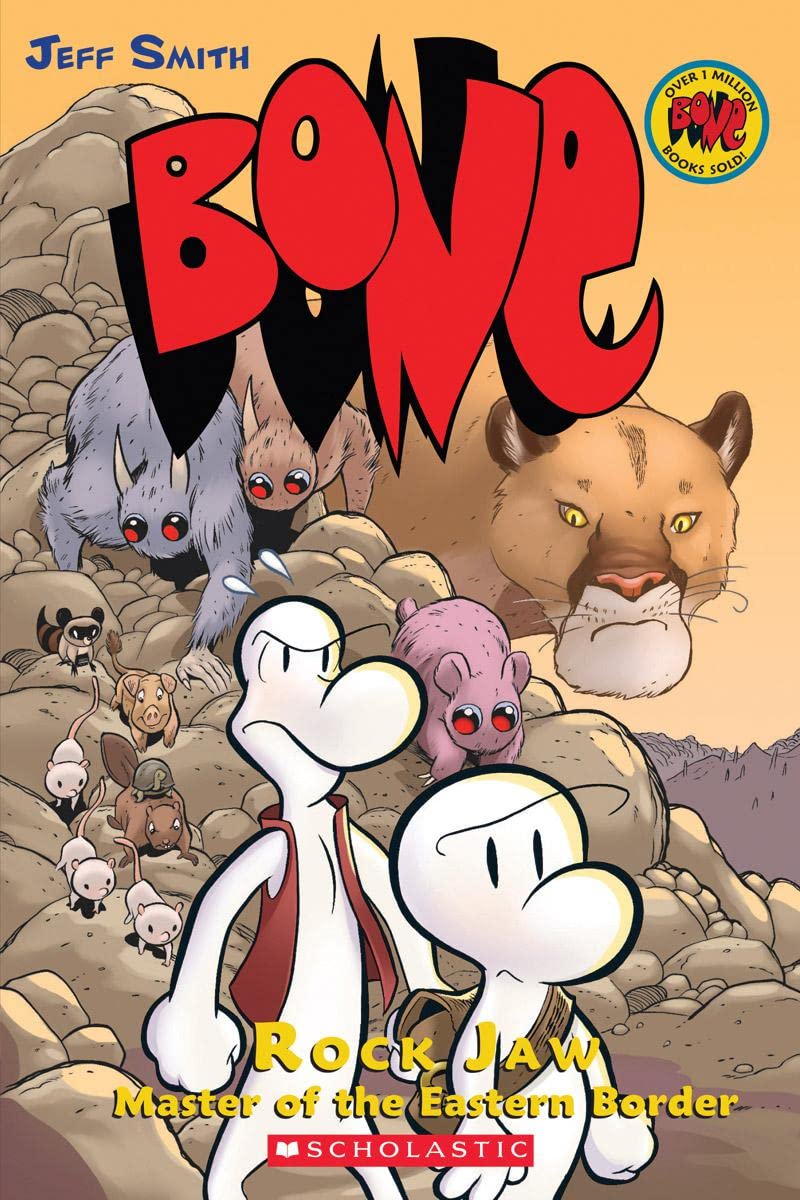
Bone: Rock Jaw: Master of the Eastern Border by Jeff Smith (Bone, #5)
Trying to return a rat creature cub to the mountains, Fone & Smiley Bone encounter yet another adversary: the sly …
Literally Graphic rated Y: the last man: 2 stars
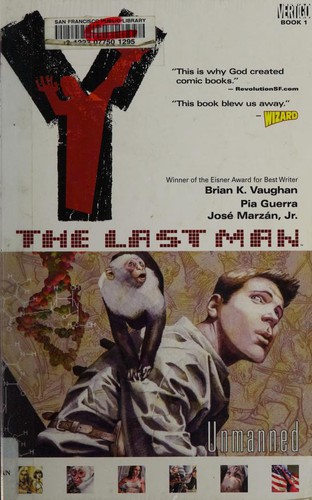
Y: the last man by Brian K. Vaughan, Pia Guerra, Jr. Jose Marzan (Y: The Last Man #1)
Y: THE LAST MAN, winner of three Eisner Awards and one of the most critically acclaimed, best-selling comic books series …
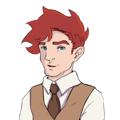
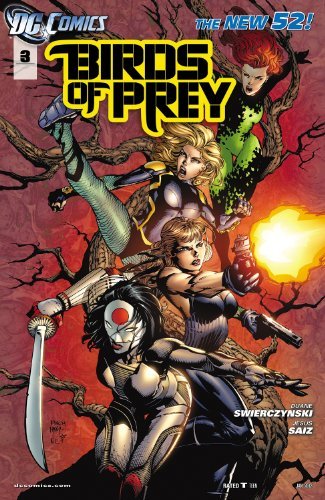
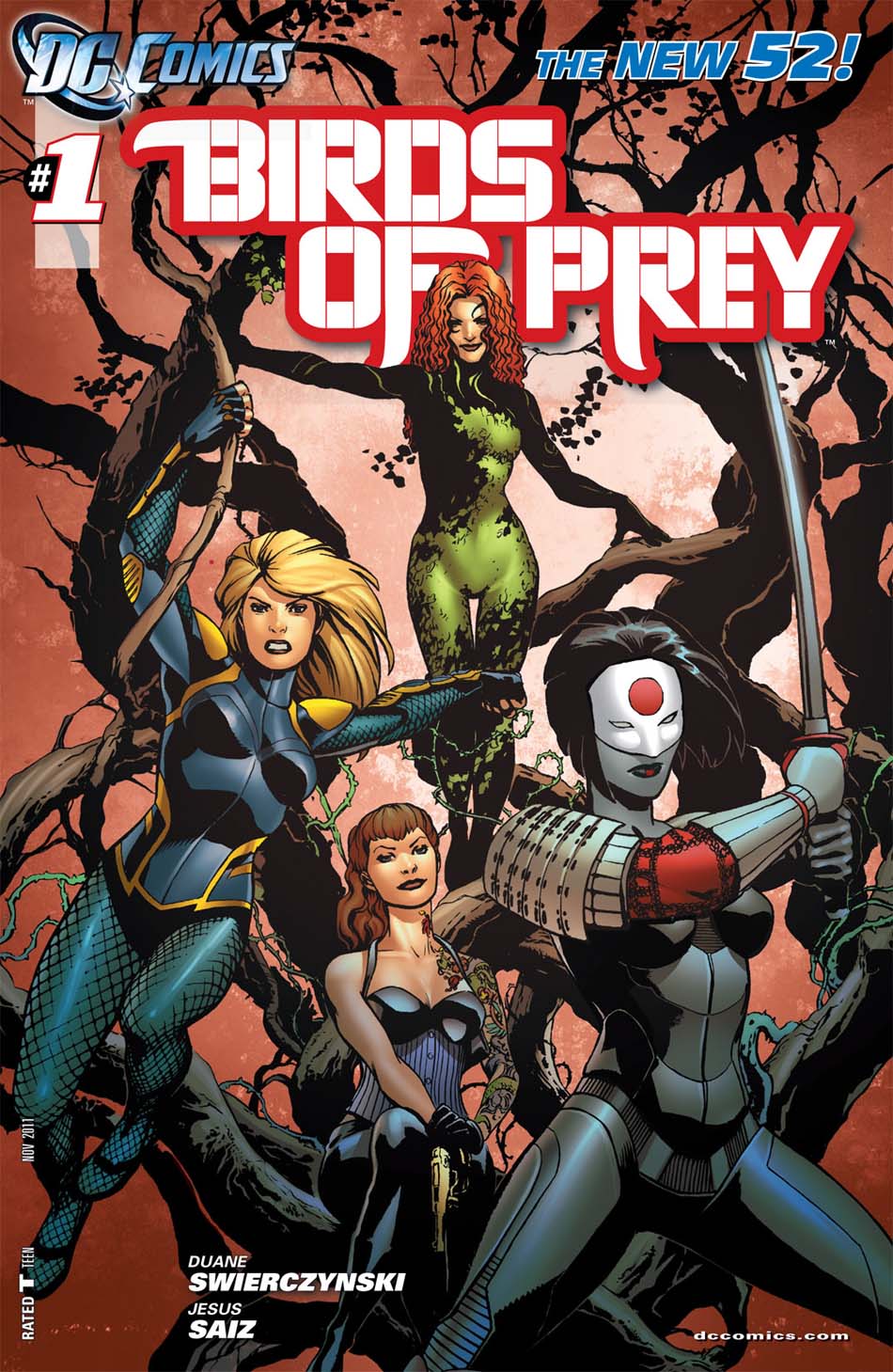
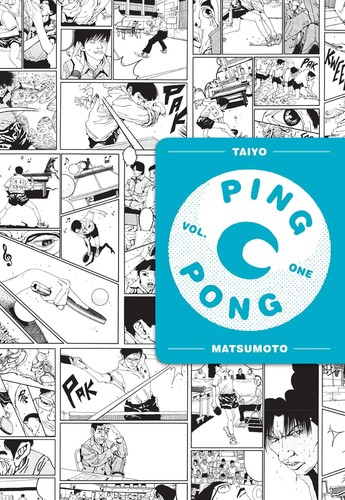
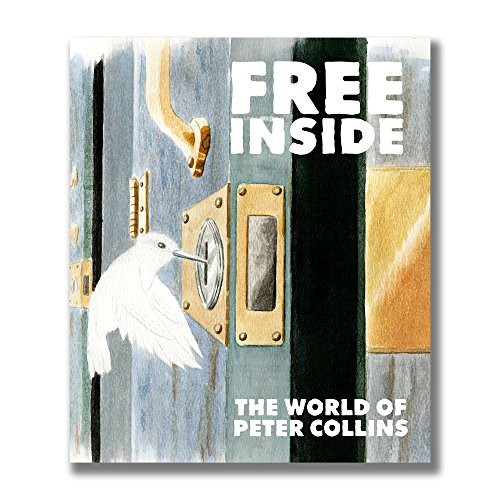
![J. Daniels: Breaking free (Paperback, 1990, chiefly ill])](/images/covers/861a87f2-515c-40f0-adb3-4b880d9e4d32.jpeg)
